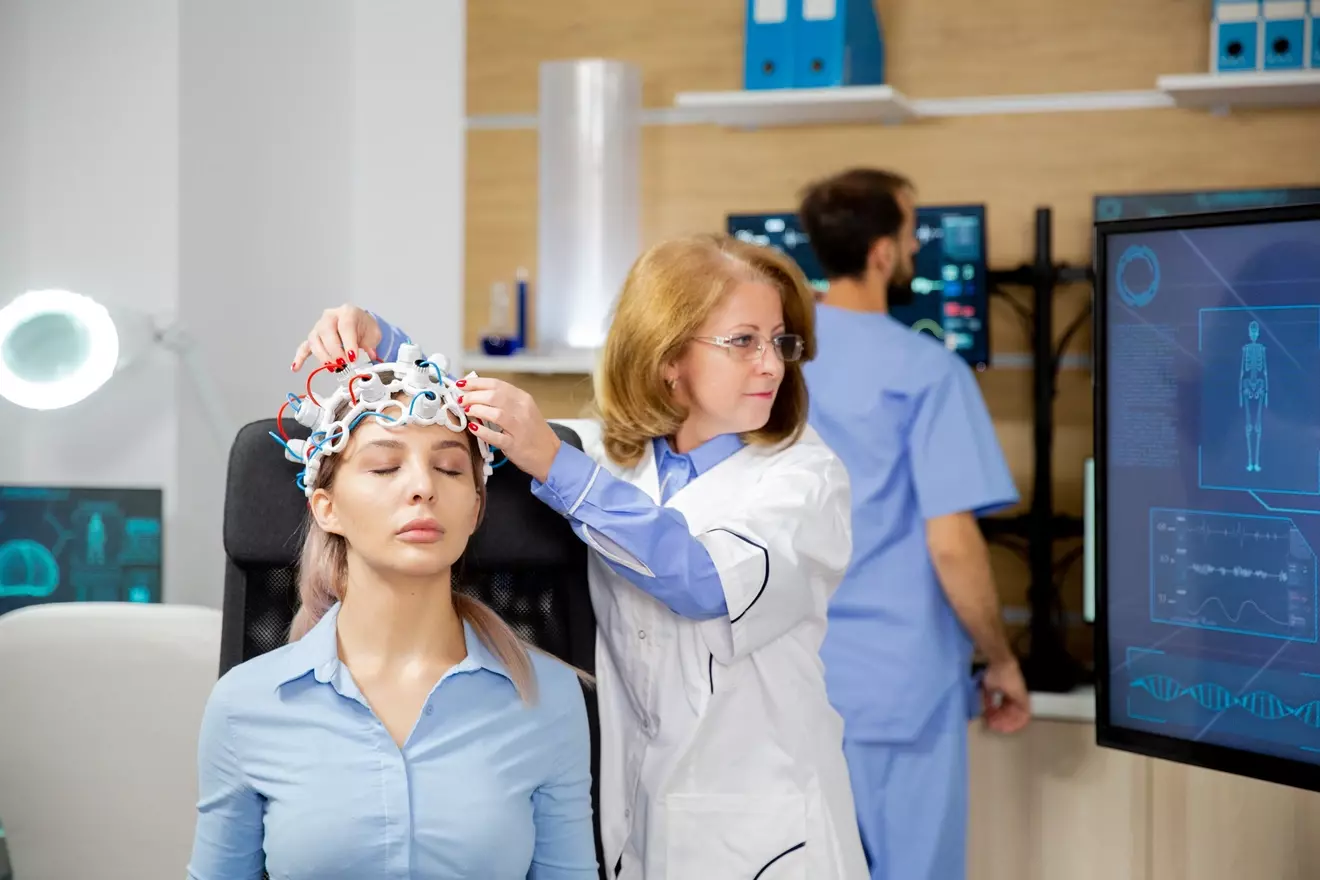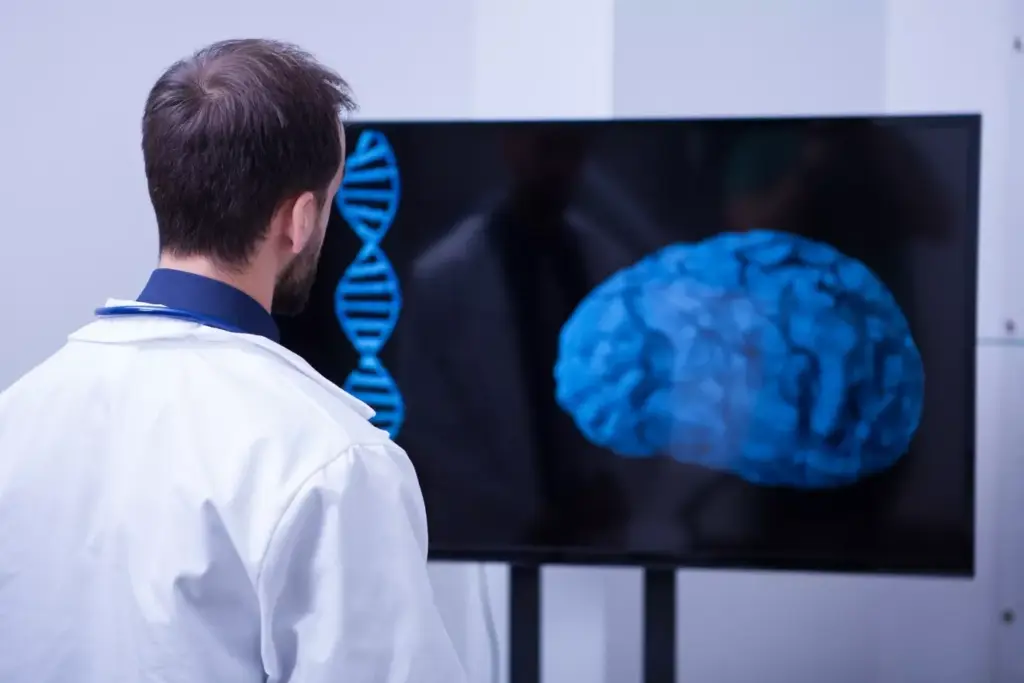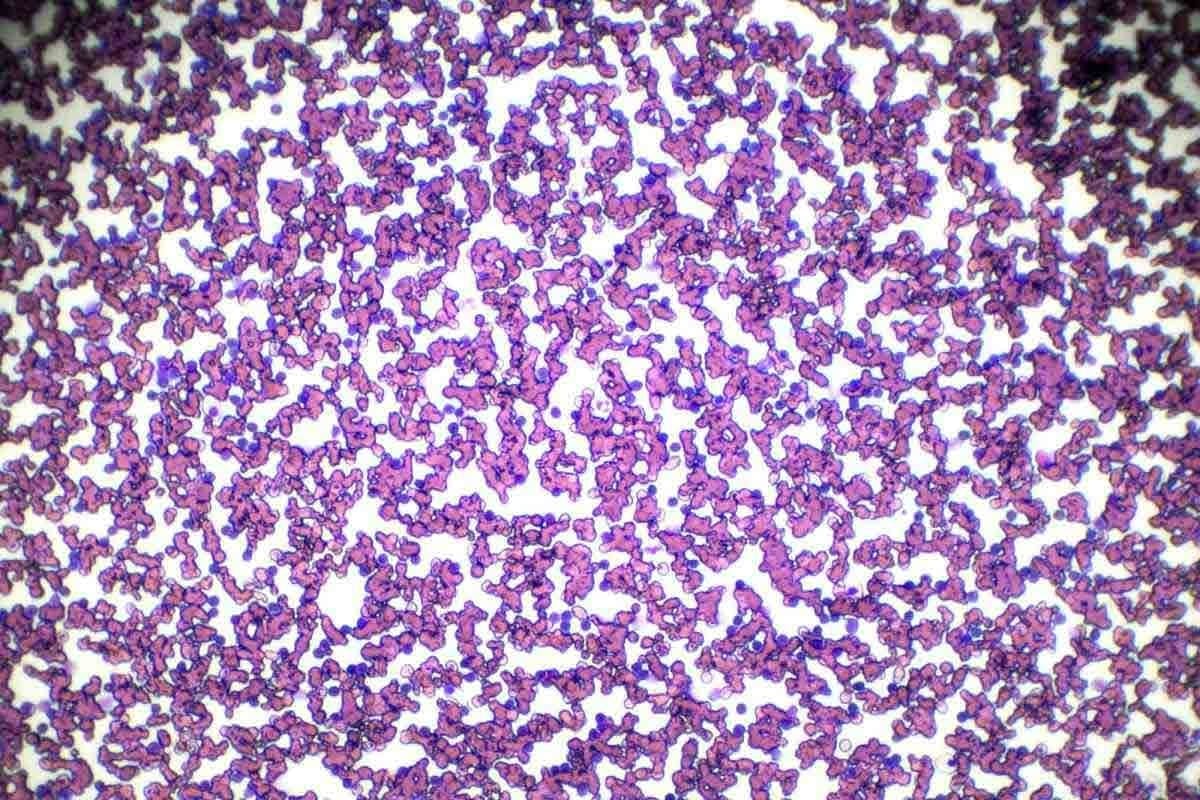Last Updated on November 27, 2025 by Bilal Hasdemir

Central nervous system (CNS) cancer includes many types of brain and spinal cord tumors. We understand how complex these cancers are. At Liv Hospital, we aim to give top-notch care to patients from around the world.
CNS cancer treatment has made big strides. We offer many options for patients. Our goal is to provide trusted, top-level care for those with these tough tumors. We use the latest treatments and focus on each patient’s needs to help them get better.
Key Takeaways
- Understanding CNS cancer is key to good treatment.
- CNS cancer covers a wide range of brain and spinal cord tumors.
- There are advanced treatment options for CNS tumors.
- Liv Hospital offers full care for patients from abroad.
- We put patients first in treating CNS cancer.
What Is Central Nervous System Cancer?
CNS cancer is about abnormal cell growth in the brain and spinal cord. It can be either benign or malignant. This growth is what makes CNS cancer a serious issue.
Definition and Classification of CNS Tumors
CNS tumors are classified based on their cell of origin, location, and behavior. The World Health Organization (WHO) uses a system to grade these tumors. This helps doctors choose the right treatment and predict how well a patient will do.
Research shows that how we classify CNS tumors is changing. New ways to diagnose tumors are helping doctors understand them better. This change helps improve treatment and care for patients.
The Spectrum of CNS Neoplasms
CNS neoplasms include many types of tumors. For example, glioblastoma is very aggressive, while meningioma is usually not. Other important types are medulloblastoma, ependymoma, and CNS lymphoma. Each tumor needs its own treatment plan.
CNS cancer covers both brain and spinal cord tumors. Different systems are used to classify these based on their characteristics. Knowing the specific type of tumor is key to effective treatment.
Our understanding of CNS tumors is always growing. Ongoing research into their genetics and molecular makeup is vital. This research helps improve diagnosis, treatment, and outcomes for patients.
Key Fact #1: The Alarming Rise in Global CNS Cancer Incidence
Recent data show a worrying increase in CNS cancer worldwide. This trend is significant and affects public health and healthcare systems globally.
CNS cancer cases are rising, which means we need to understand the causes and find better treatments. The health community must tackle this challenge to improve patient care.
124% Increase in CNS Cancer Incidence
Statistics reveal a 124% rise in CNS cancer cases from 1990. This alarming increase calls for more research and effective treatments.
This trend is not just a statistic; it’s a call to action. Healthcare providers, researchers, and policymakers must work together to address CNS cancer.
Current Statistics: 321,000 New Cases Annually
Every year, over 321,000 new CNS cancer cases are reported. This number shows the problem’s scale and the need for global cooperation.
To grasp the issue better, let’s look at the current statistics in a table:
| Year | New CNS Cancer Cases | Percentage Increase |
|---|---|---|
| 1990 | approximately 138,000 | – |
| 2023 | 321,000 | 124% |
Dealing with CNS cancer requires a broad approach. We must improve treatments and support for patients.
We aim to provide full care and support to CNS cancer patients. We understand their complex needs and the need for compassion.
Key Fact #2: Most Common Types of Adult Brain Tumors
Adult brain tumors are complex and varied. Glioblastoma and meningioma are two major types. Knowing about these tumors helps us create better treatment plans.
Glioblastoma: The Most Aggressive Form
Glioblastoma is the most aggressive brain tumor in adults. It grows fast and spreads into the brain, making surgery hard. Despite this, treatments like surgery, radiation, and chemotherapy have helped patients more.
Characteristics of Glioblastoma:
- High-grade malignancy
- Rapid growth rate
- Infiltration into surrounding brain tissue
Meningioma: The Most Prevalent Type
Meningioma is the most common adult brain tumor. It starts in the meninges, which protect the brain and spinal cord. Most meningiomas are not cancerous, but some can be. Treatment depends on the tumor’s size, location, and type.
Treatment Approaches for Meningioma:
- Surgical resection for symptomatic or growing tumors
- Observation for small, asymptomatic meningiomas
- Radiation therapy for inoperable or malignant cases
Other Significant CNS Tumors
Other important CNS tumors include astrocytomas, oligodendrogliomas, and ependymomas. Each has its own traits and treatment options. Accurate diagnosis and molecular profiling are key to choosing the right treatment.
Understanding adult brain tumors helps us tackle their complexities. Our aim is to provide care that meets each patient’s unique needs.
Key Fact #3: Regional Variations in CNS Tumor Prevalence and Outcomes
CNS tumors show big differences in how common they are and how well people do in different places. These differences come from things like how people live and the quality of healthcare in each area.
Impact of Socio-Demographic Index (SDI)
The Socio-Demographic Index (SDI) looks at income, education, and how many kids people have. Places with a higher SDI usually do better with brain tumors. This is because they have better healthcare and can get to specialized care easier.
Places with a higher SDI also see better survival rates for CNS tumor patients. This is because they can catch tumors earlier and treat them more effectively.
Healthcare Disparities in Brain Tumor Management
How well brain tumors are managed can vary a lot. Places with less access to healthcare, like specialized neurosurgery and advanced tests, tend to have worse outcomes.
To show how healthcare disparities affect CNS tumors, let’s look at a table. It compares outcomes in different SDI regions:
| SDI Region | 5-Year Survival Rate | Access to Neurosurgical Care |
|---|---|---|
| High SDI | 65% | 95% |
| Middle SDI | 45% | 70% |
| Low SDI | 25% | 40% |
The table shows that higher SDI areas have better CNS tumor results. This points out the need to tackle healthcare disparities to help patients worldwide.
By knowing about these differences and why they happen, we can create fairer healthcare plans for CNS tumors.
Key Fact #4: Challenges in Early Diagnosis of Nervous System Cancer
Finding nervous system cancer early is hard. This is because its symptoms are not clear. These symptoms can be mistaken for other, less serious problems.
Early detection is key for better treatment and outcomes. Knowing the signs of nervous system cancer is important.
Recognizing Warning Signs and Symptoms
The symptoms of nervous system cancer vary. They depend on where and how big the tumor is. Common signs include:
- Headaches that are persistent or severe
- Seizures, even if you’ve never had them before
- Nausea or vomiting, often in the morning
- Vision problems, like double vision or losing part of your sight
- Difficulty with balance or walking
- Changes in personality or how you think
Seek medical help if these symptoms don’t go away or get worse. These signs can mean other things too. But if they keep happening or get worse, you need to see a doctor.
Advanced Diagnostic Approaches
New medical tech has made diagnosing nervous system cancer better. Now, doctors use:
- Magnetic Resonance Imaging (MRI): Gives clear pictures of the brain and spinal cord. It helps find tumors and see how big they are.
- Computed Tomography (CT) scans: Good for spotting tumors and figuring out their size and where they are.
- Positron Emission Tomography (PET) scans: Shows how active tumors are. This helps doctors diagnose and plan treatment.
- Liquid Biopsy: A new way to check for cancer in blood or spinal fluid. It might help find cancer early and learn about the tumor’s genetics.
These new tools help doctors find nervous system cancer sooner and more accurately. This means they can start treatment faster and plan it better.
By knowing the signs and using new diagnostic tools, we can catch nervous system cancer sooner. This helps patients get better faster.
Key Fact #5: Surgical Approaches to Intracranial Masses
Treating intracranial masses often means surgery. This field has grown a lot to help patients more. We focus on the latest and best surgical methods for brain tumors.
Craniotomy and Tumor Resection
Craniotomy is a key surgery for brain tumors. It involves taking part of the skull off to get to the tumor. Our neurosurgeons are experts at doing craniotomies, making sure they remove the tumor carefully.
The aim is to take out as much of the tumor as we can. This helps ease pressure on the brain and improves symptoms. Sometimes, we use awake craniotomy to help keep important brain functions safe.
Minimally Invasive Techniques
We also use new, less invasive surgeries for some patients. These use smaller cuts and special tools to cause less damage. These procedures are great for tumors in hard spots or for patients not good for big surgeries.
Techniques like endoscopic surgery and laser ablation are part of our arsenal. They help treat tumors with fewer side effects and shorter stays in the hospital.
We keep pushing the limits in neurosurgery to give our patients the best care. Our goal is to use the most advanced surgical methods for intracranial masses to get the best results for brain tumor patients.
Key Fact #6: Radiation Therapy for Central Nervous System Neoplasms
Radiation therapy is key in fighting central nervous system neoplasms. It offers hope to patients everywhere. We use it to hit cancer cells hard while keeping healthy tissue safe.
This treatment is vital for CNS neoplasm care. New ways to deliver it are making patients’ lives better. Our team uses different methods to fight CNS tumors well.
External Beam Radiation
External beam radiation therapy (EBRT) is a main way to treat CNS neoplasms. It sends beams from outside the body to the tumor. This gives a precise dose of radiation to the cancer cells.
EBRT is great for tumors that can’t be removed or are in hard-to-reach brain spots. We use top-notch imaging to aim right at the tumor. This way, we protect the healthy tissue around it.
Benefits of External Beam Radiation:
- Non-invasive treatment approach
- High precision in targeting tumors
- Ability to treat tumors in sensitive brain areas
Stereotactic Radiosurgery
Stereotactic radiosurgery (SRS) is a precise radiation therapy for small brain tumors. It’s not surgery but a way to give a high dose of radiation to a spot.
SRS works well for some brain metastases, acoustic neuromas, and benign tumors. Our team uses the latest SRS methods. This gives patients a single, easy treatment option.
- Highly precise delivery of radiation
- Minimally invasive, often single-session treatment
- Effective for treating small, well-defined tumors
Let’s look at some stats on radiation therapy for CNS neoplasms:
| Treatment Modality | Tumor Type | Success Rate |
|---|---|---|
| External Beam Radiation | Glioblastoma | 60% |
| Stereotactic Radiosurgery | Brain Metastases | 85% |
| External Beam Radiation | Meningioma | 90% |
We keep improving radiation therapy to help our patients. By using the latest tech and our skills, we aim to make a big difference. Our goal is to improve life for those with CNS neoplasms.
Key Fact #7: Innovative Brain Cancer Treatment Options
New treatments are changing how we fight brain cancer. Research keeps moving forward, bringing new ways to help patients.
Studies show that new therapies are making a big difference. “The future of brain cancer treatment is all about personalized and targeted care,” says a top oncologist.
Chemotherapy Protocols
Chemotherapy is a key part of treating brain cancer. Today’s chemotherapy is more effective and has fewer side effects. Temozolomide is a drug that works well against glioblastoma.
Targeted Molecular Therapies
Targeted molecular therapies are a big step forward. They target specific molecules in cancer cells. Bevacizumab is used to treat glioblastoma that comes back.
“Targeted therapies offer a more precise approach to treating brain cancer, potentially reducing harm to healthy cells,” notes a cancer research expert.
Immunotherapy Approaches
Immunotherapy is a new area with lots of promise. It uses the immune system to fight cancer. Different methods, like checkpoint inhibitors and CAR-T cell therapy, are being tested.
As we learn more about these new treatments, the future looks brighter for brain cancer patients.
Living with CNS Cancer: Supportive Care and Quality of Life
Supportive care is key for CNS cancer patients. It aims to boost their quality of life by managing symptoms and helping with rehabilitation. We know that treating CNS cancer is more than just medicine. It’s about meeting the physical, emotional, and social needs of our patients.
Symptom Management
Managing symptoms is at the heart of supportive care for CNS cancer patients. We use many methods to reduce pain, nausea, and other issues. Our methods include:
- Pharmacological interventions tailored to the patient’s specific needs
- Non-pharmacological techniques such as cognitive-behavioral therapy and relaxation exercises
- Multidisciplinary care involving neurologists, oncologists, and palliative care specialists
Symptom management not only improves the patient’s quality of life but also enables them to tolerate treatments better. Our team works closely with patients to create personalized plans for symptom management.
Rehabilitation Strategies
Rehabilitation is essential for CNS cancer patients to regain their abilities and independence. We provide a variety of rehabilitation services, including:
| Rehabilitation Service | Description | Benefits |
|---|---|---|
| Physical Therapy | Exercises and interventions to improve mobility and strength | Enhanced physical function, reduced risk of falls |
| Occupational Therapy | Strategies to improve daily living activities | Increased independence, improved quality of life |
| Speech Therapy | Interventions to address communication and swallowing disorders | Improved communication, reduced risk of aspiration |
Our rehabilitation programs are flexible and adapt to our patients’ changing needs. By adding rehabilitation to their care plan, we help CNS cancer patients achieve the best outcomes.
At our institution, we are committed to providing top-notch healthcare with full support for international patients. Our team is dedicated to giving compassionate and complete care to those living with CNS cancer.
Conclusion: The Future of Central Nervous System Cancer Treatment
The future of treating central nervous system cancer looks bright. This is thanks to ongoing research and new ways to treat the disease. Recent findings show great hope for better results with new therapies.
We are always looking to improve care for CNS cancer patients. By staying up-to-date with the latest treatments, we can offer the best care. This means better outcomes and a better quality of life for our patients.
There is a lot of hope for CNS cancer treatment in the future. We are excited about the new discoveries that could change the game. Our goal is to provide top-notch healthcare to patients from around the world.
FAQ
What is Central Nervous System (CNS) cancer?
CNS cancer is a group of cancers that affect the brain and spinal cord. It needs a detailed treatment plan.
What are the most common types of adult brain tumors?
Common types include glioblastoma, meningioma, and other CNS tumors. Each has its own treatment options.
What is glioblastoma, and how is it treated?
Glioblastoma is a very aggressive brain cancer. It’s treated with surgery, radiation, and chemotherapy.
What are the warning signs and symptoms of nervous system cancer?
Signs include headaches, seizures, and changes in thinking. Spotting them early is key for treatment.
How is CNS cancer diagnosed?
Diagnosis uses advanced tests like MRI and CT scans. A biopsy and histopathology also help.
What are the treatment options for intracranial masses?
Options include surgery, like craniotomy, and less invasive methods. Radiation and chemotherapy are also used.
What is the role of radiation therapy in treating CNS neoplasms?
Radiation therapy, including external beam and stereotactic radiosurgery, is vital. It offers precise and effective treatment.
What are the latest advancements in brain cancer treatment?
New treatments include chemotherapy, targeted therapies, and immunotherapy. They offer hope for CNS cancer patients.
How can patients with CNS cancer manage their symptoms and improve quality of life?
Supportive care is key. It includes managing symptoms and rehabilitation. It meets patients’ physical, emotional, and social needs.
What is the significance of Socio-Demographic Index (SDI) in CNS tumor prevalence and outcomes?
SDI helps understand CNS tumor trends and outcomes. It shows how healthcare disparities affect these issues.
What is the future of Central Nervous System cancer treatment?
Research and care advancements will improve treatment and quality of life for CNS cancer patients.
References
- Scott, B. J., et al. Cellular immunotherapies for central nervous system cancers. PubMed. Retrieved from https://pubmed.ncbi.nlm.nih.gov/40933036/
- UCSF Clinical Trials. Central Nervous System Tumor Clinical Trials. Retrieved from https://clinicaltrials.ucsf.edu/central-nervous-system-tumor
- National Cancer Institute. Adult Central Nervous System Tumors Treatment (PDQ®)–Health Professional Version. Retrieved from https://www.cancer.gov/types/brain/hp/adult-brain-treatment-pdq
- Cancer Research Institute. Immunotherapy for Brain Cancer. Retrieved from https://www.cancerresearch.org/immunotherapy-by-cancer-type/brain-cancer








